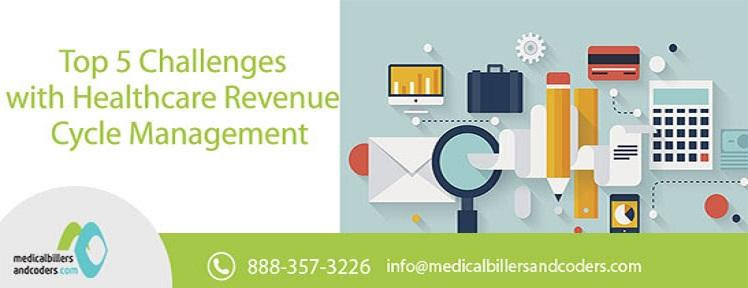Top 5 Challenges with Healthcare Revenue Cycle Management
- Get link
- X
- Other Apps
Healthcare Revenue Cycle Management
Healthcare Revenue Cycle Management professionals use information technology to keep track of claims through their entire lifecycle. This is necessary to ensure payments are collected and denied claims are addressed. However, some hospitals struggle to put information technology and billing infrastructure in place in a way that successfully manages claims as well as large outpatient networks. In today’s healthcare environment, effective health information technology is essential. Unfortunately, not all hospitals and clinics have the capital or infrastructure to invest in new technologies or even required technologies, such as EHRs.
If you have ever come across or worked in a healthcare organization, you must be aware of the importance of medical claims and how they can put financial constraints on your revenue cycle when rejected. The administrative work of a healthcare facility is different from other industries as clinical treatment is not always shorter and prone to complex procedures, starting from a patient’s appointment to account closure.
The non-medical works include taking care of all the documentation, eligibility verification, demographic entry, billing and coding, and filing of medical claims. If a single step is overlooked, the claim will be rejected. Thus, a disorganized Revenue Cycle can lead to a stockpile of uncollectible with no proper process to streamline it.
Following are the Top 5 Challenges in Healthcare Revenue Cycle Management:
Healthcare Revenue Cycle Management professionals play a crucial role in managing the financial aspects of healthcare organizations. However, there are several challenges that can hinder the effective management of the revenue cycle. In this article, we will discuss the top five challenges in healthcare revenue cycle management and how they impact the financial stability of healthcare providers.
1. Billing and Collections Mistakes
One of the significant challenges in revenue cycle management is the occurrence of billing and collections mistakes. A poor billing process can result in significant financial losses for healthcare organizations. Inaccurate billing or coding errors can lead to claim denials or delayed payments, impacting the revenue stream. It is essential for healthcare providers to have an efficient and streamlined medical billing process with competent staff to ensure accurate and timely payment collection.
2. Collection from Patients
Collecting payments from patients is another critical challenge in revenue cycle management. With the rise in out-of-pocket expenses and higher deductibles, many patients struggle to afford immediate payment for medical services. Healthcare organizations face the task of balancing debt collection without pressuring patients to seek care elsewhere. It is crucial for providers to develop a better understanding of patient responsibility and implement streamlined methods for collecting payments to maintain financial stability.
To know more about the Top 5 Challenges with Healthcare Revenue Cycle Management, click here: https://bit.ly/3PSPLOv Contact us at info@medicalbillersandcoders.com/ 888-357-3226.
- Get link
- X
- Other Apps




Comments
Post a Comment